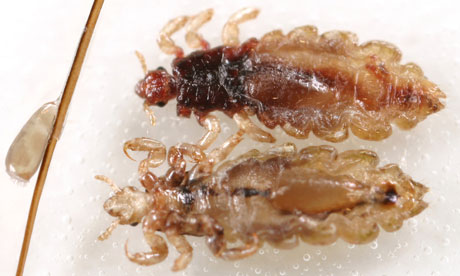
Lice do not prefer clean hair, as is commonly believed. They live in any hair they can find – they are after blood and use the hair as cover. The clean-hair myth was created in the 1970s to convince middle-class parents that it was not an issue only associated with poorer children.
Tying your hair back as a preventative measure is also a myth. It makes no difference. Longer hair is only a problem in that it makes it harder to detect lice. They are not fussy. What really matters is reducing head-to-head contact with other people because lice can't jump or fly. Girls catch lice more, in general, because they may cuddle and hug each other more than boys do.
Combing is better than brushing because it allows you to see the lice. Metal combs are, in general, a waste of time because the teeth are too close together. Ideally, you should use a specialist rigid plastic comb with flat-faced teeth no wider than 0.3mm apart. Regular checking is key: at least once a week with school children. And if you find your child has lice, check everyone else in the household.
Pesticide-based treatments don't really work any more because lice have developed a tolerance to them over the past 20 years. Silicone-based treatments work best as they coat the lice and stop them excreting water, which kills them. Ideally, schools and parents would identify the children who have caught lice. This would be a huge help. But it remains taboo so, head lice will continue to be a problem.
Ian Burgess, director of the Medical Entomology Centre, was talking to Leo Hickman.

